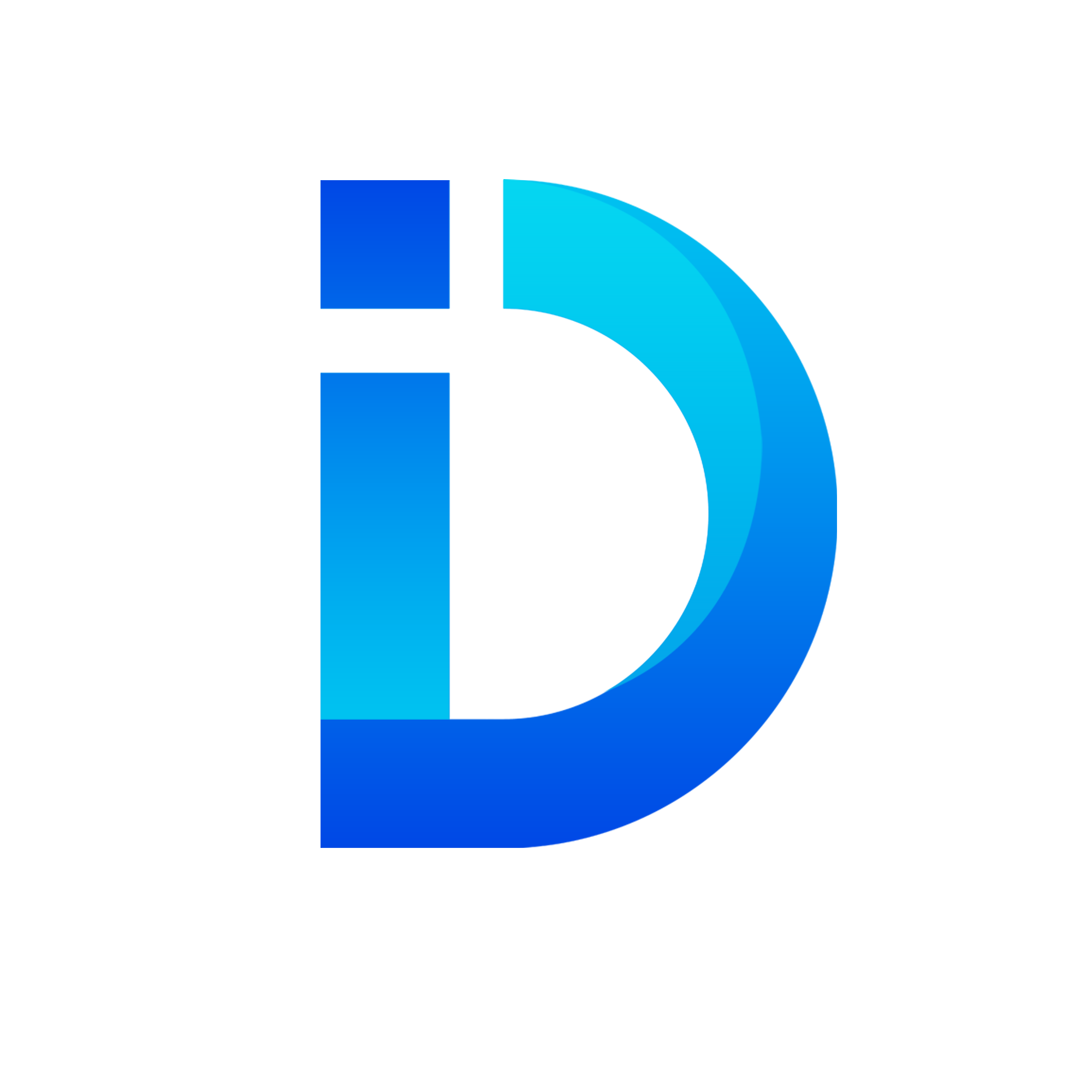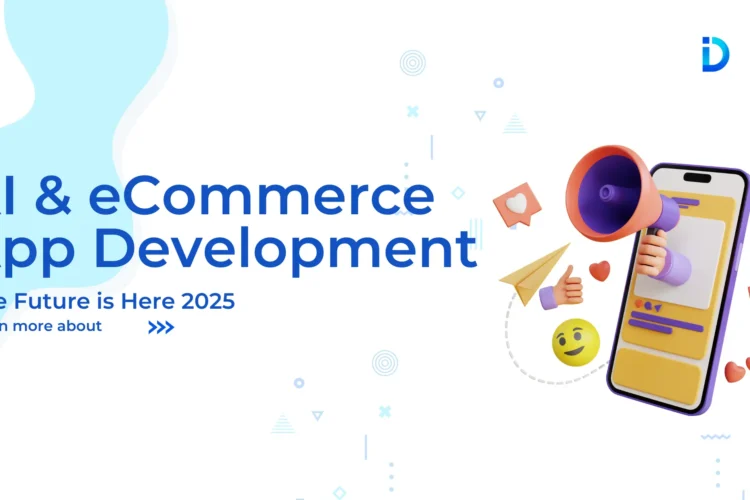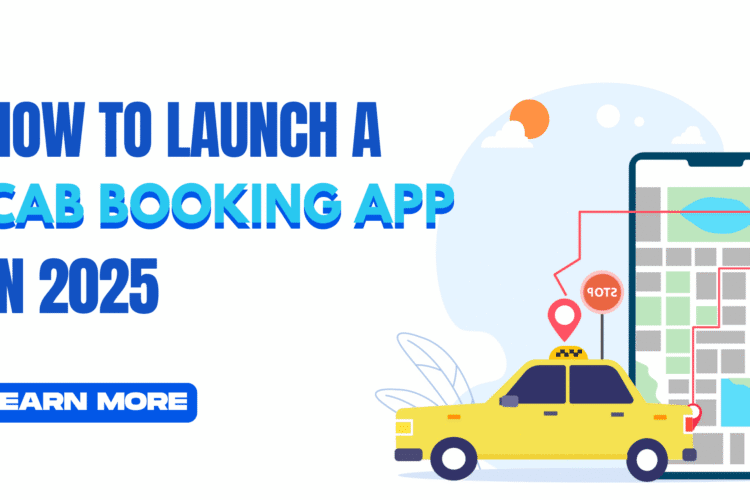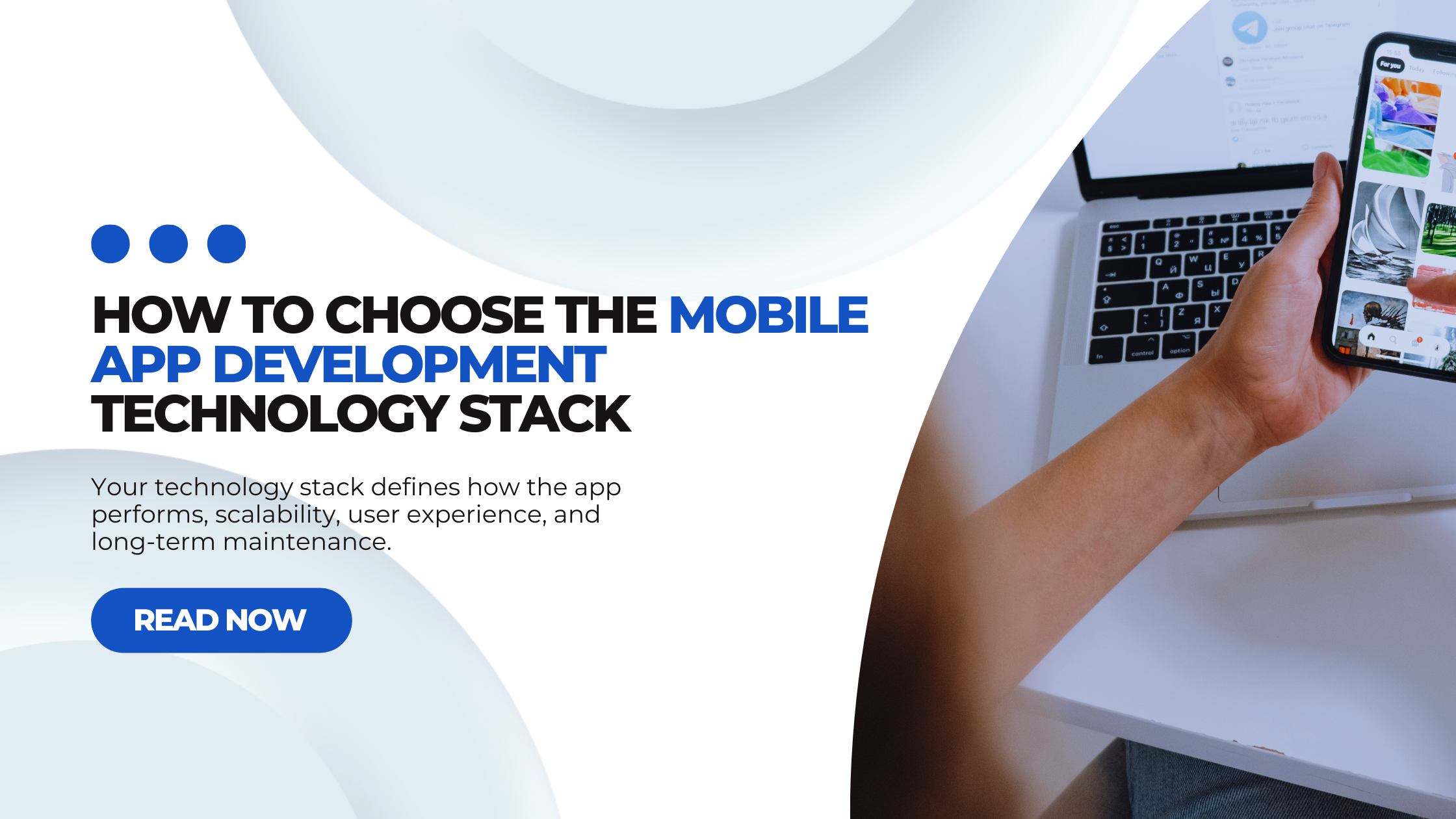
Choosing the right Mobile App Development Technology Stack is critical for creating a thriving and scalable app. Your technology stack defines the app’s performance, scalability, user experience, and long-term maintenance. Whether you are designing a native or cross-platform app, making an informed decision about your tech stack can save time, lower costs, and optimize your app prospects. In this article, we guide you through critical factors to consider when you select your mobile app development technology.
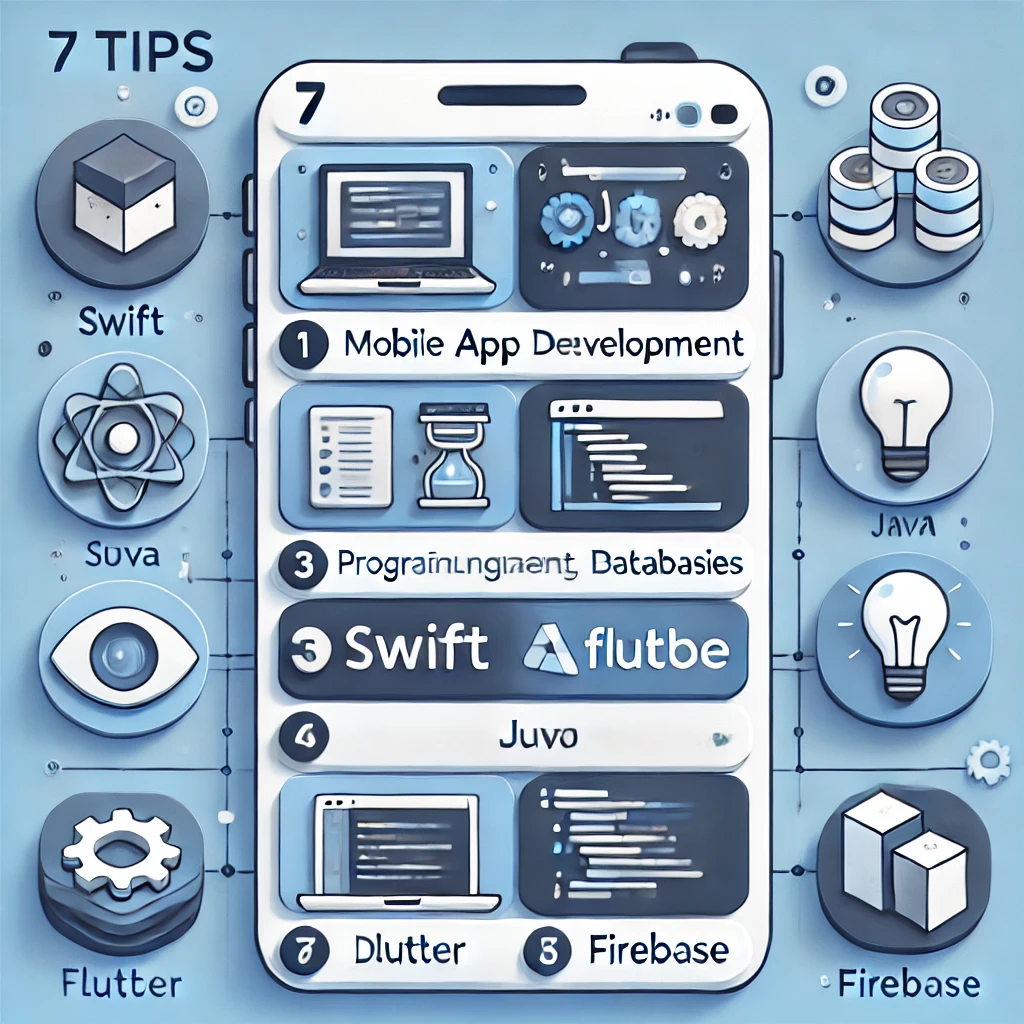
About Mobile App Development Technology Stack
You all wonder what a mobile app development technology stack is. A mobile app development technology stack combines tools, frameworks, programming languages, and libraries used to design mobile apps. There are two parts to this:
Frontend (Client-side): This is what the user sees and interacts with. It includes everything related to the app’s user interface (UI) and experience (UX).
Backend (Server Side): it includes server-side logic, database, and server that powers the app. It handles user authentication, business logic, database interaction, and api integration.
Key Factors to Consider When Choosing a Mobile App Development Technology Stack
1. App Complexity and elements:
The app’s complexity plays a most important role in defining the app stack. Simple apps, like those with the tiniest elements and UI Components, can be designed using lighter technologies. Whether for complicated apps that need advanced functionalities such as real-time data processing, or geolocation, machine learning needs a powerful tech stack.
2. Target platforms: iOS, Android or Both
The platforms your app will be running on are a major factor in choosing a tech stack. Native apps for iOS and Android use different tech stacks.
- iOS Development: Native iOS apps are built on Swift and Objective-C.
- Android Development: these apps are usually Built with Java and Kotlin.
- Cross-Platform Development: If you want your app to work on both iOS and Android consider using frameworks like react native and Flutter, these allow you to use a single codebase for different platforms.
3. Performance
Performance is crucial to user experience. If you need high-performing apps like gaming – high-resolution media, native development is the way to go. Native apps are optimized for their detailed platform (iOS or Android), delivering better versions compared to cross-platform solutions.
If cost-effectiveness and time are a priority and performance is not that important, a cross-platform framework like Flutter and React native can offer good performance while reducing development time.
4. Development Time and Budget
Your budget and timeline are other important factors in choosing the right stack. The cross-platform solution allows you to design a single codebase for both. Reduce time and lower cost. On the other hand, native app development for both iOS and Android requires to build apps two different apps. Which affects time and budget both.
- Native Development: Best apps that need the best performance, but it increases development time and cost.
- Cross-Platform Development: This one is the most cost-effective and faster but these apps may not provide the same performance as native apps.
5. Scalability
When creating an app, consider its future evolution. If you expect scaling your apps to handle more users and additional features. Choosing a stack that can extend your apps. Cloud-based backends like Google Cloud, firebase, and AWS for scalable apps as they offer international reach and infrastructure flexibility.
6. Security
Security is a key factor in mobile app development, especially when your app handles sensitive data like financial transactions, healthcare data, and personal information of the user. Make sure that your tech stack includes secure libraries and frameworks. Moreover, using secure backend services, such as Firebase and AWS can help assure submission with regulations like GDPR and HIPAA.
7. Developer Expertise
The skill set of your team that works on your app is another important concern when selecting the technology stack. If your developers are experienced in individual frameworks and language it’s best to use that. For example, if your team is well-trained in React native then react native is the best option for cross-platform development.
Popular Mobile App Development Technology Stacks
1. Native Mobile App Development Stacks
iOS: Swift + Xcode
Swift is an Apple-favored language for iOS app development. It is fast, secure, and comes with modern features that simplify the development process. Xcode is Apple’s official integrated development environment (IDE) offering a complete toolkit for building iOS apps.
Android: Kotlin + Android Studio
Kotlin is Google’s preferred language for Android app development. Kotlin is replacing Java due to its modern syntax and better performance. Android Studio is the official integrated development environment offering extensive tools for building apps.
2. Cross-Platform Development Stacks
React Native + JavaScript
React native is preferred and built by Facebook as one of the most powerful frameworks for building cross-platform apps. It allows developers to use a single codebase for both iOS and Android, making it positively efficient. JavaScript (or TypeScript) is used to write the app, permitting quick development cycles.
Flutter + Dart
Flutter was developed by Google using Dart language to create beautiful, high-performance apps for both iOS and Android. It has gained popularity due to rich UI elements and native performance. Flutter is perfect for those business that wants cross-platform apps with better UI and seamless performance.
3. Backend Development Stacks
Node.js + Express
Node.js a JavaScript runtime, is generally used for backend services. When paired with express.js, it allows developers to design strong server-side apps for real-time data processing.
Firebase
Firebase is a Backend-as-a-Service (BaaS) solution furnished by Google. It provides real-time database, authentication hosting, and cloud storage. Making it a great option for small businesses looking for scalable backend solutions.
Conclusion
Selecting the best mobile app development technology stack is important to make sure of the app’s success. The decision should depend on factors like app complexity, platforms, developers, time and budget, security, and scalability. Whether you opt for native development for good performance and ct=ross-platform for faster time-to-market, cost-effective aligning your technology stack apps goals.
Take your time to choose the better stack for your next app. With Kotlin and Swift options you can go for native apps and cross-platforms Flutter and React native are the best options.
